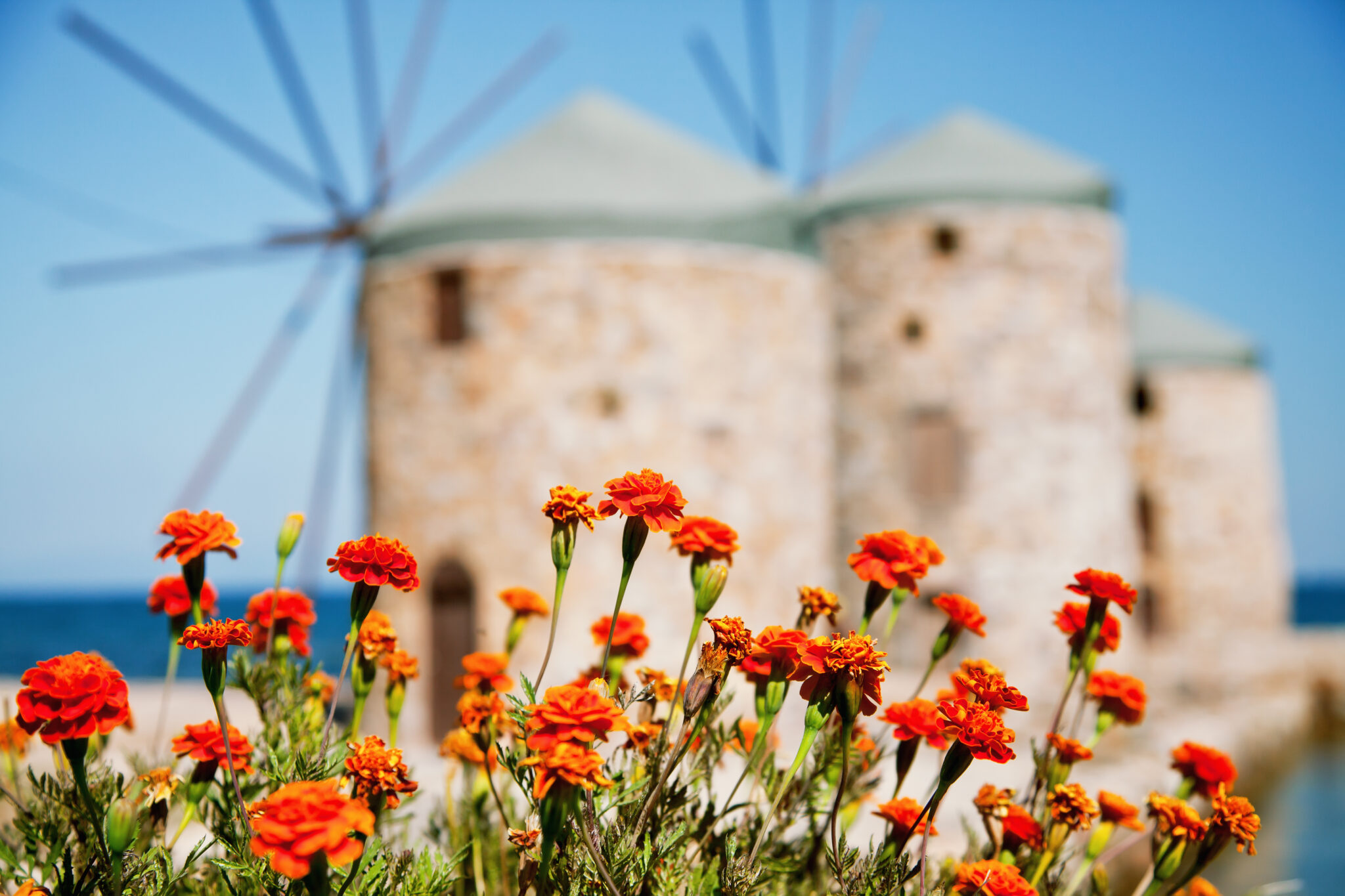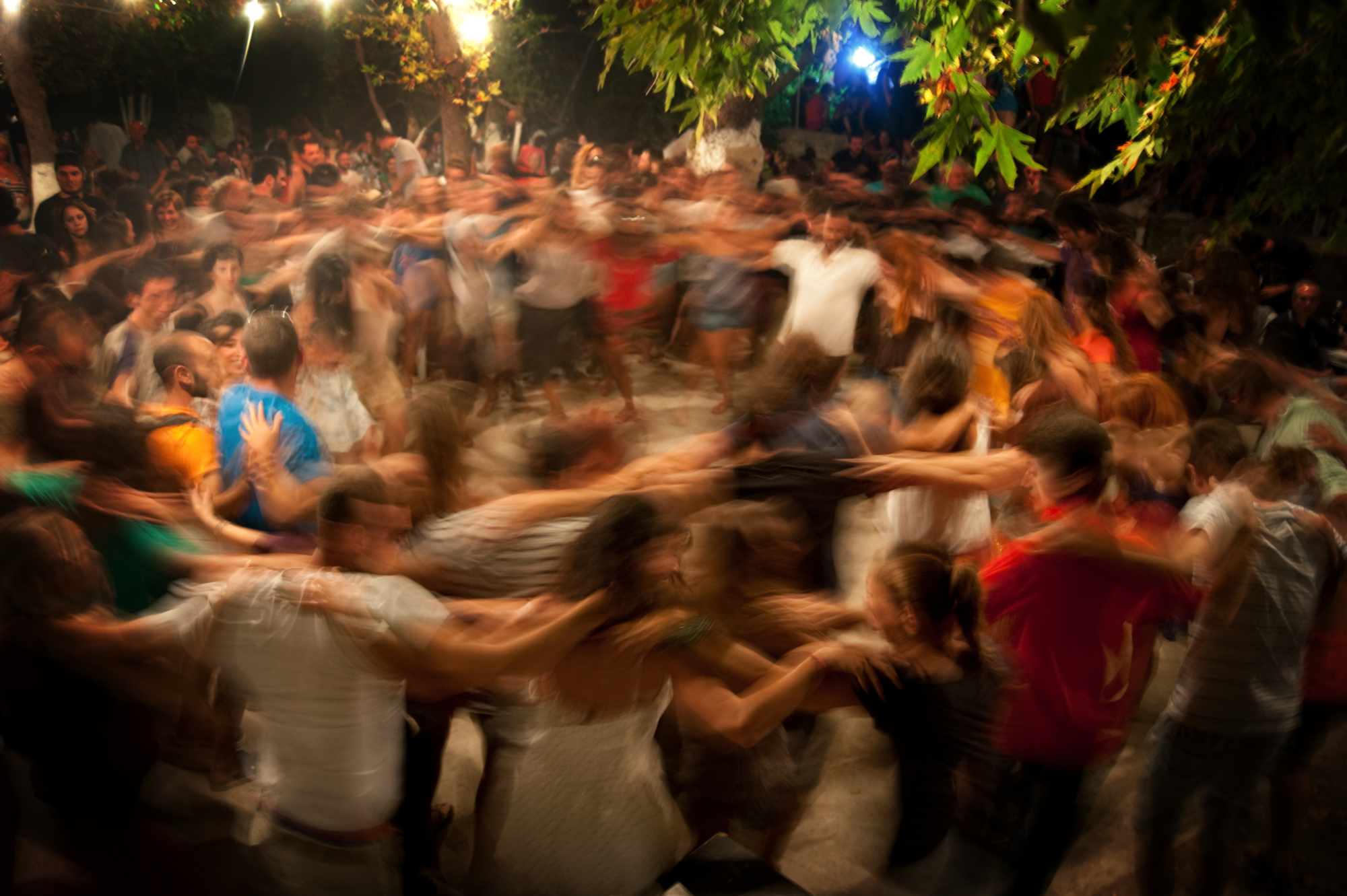Every year on the first of May, Greeks enjoy celebrating the full-fledged arrival of spring, on a day known as Protomagia. One of the earliest festivities was the Anthesteria, a festival of flowers, marking the first official floral celebration among the Greeks. Across the country, this festive anniversary intertwines ancient rituals with the joyous spirits of locals and visitors alike. And there’s plenty of cause for celebration! After all, May Day heralds spring’s victory over winter, embodying the triumph of (boldly colorful and sunny) life over (cold and dark) death.
Protomagia’s origins can be traced back to pre-Christian agricultural rituals designed to foster fertility in the fields, and by extension, among animals and humans alike. Over the centuries, May Day has evolved, maintaining its significance through various forms and celebrations but becoming more of a contemporary meeting point in time for families and friends on a spring day off because of its ties with labor day. From the homemade and bought floral wreaths adorning doorways to lively gatherings in green spaces, May Day in Greece is a display of cultural heritage and seasonal revival. Discover the special traditions that mark the welcoming of spring across Greece.
History
Tradition suggests that May derives its name from the Roman deity Maia, named after the Greek word for nurse and mother, and reflecting her role as the nurturing mother of Hermes. May, the fifth month, was known as Thargelion in ancient times, celebrated with the renowned Anthophoria festival, dedicated to Demeter, the goddess of agriculture, and her daughter Persephone, who emerges from the underworld during this month. In ancient Rome, this month featured the Rosalia, a festival preserved even by Byzantine emperors, epitomizing the dual nature of May: both good and evil, rebirth and death, all converging on the first day.
Floral Celebrations and Wreath Making
Protomagia is widely characterized by the collection of wildflowers, a tradition enjoyed in both city parks and rural fields. Participants gather an array of spring blossoms — daisies, poppies, and more — to make into decorative wreaths, which traditionally included thorns, nettles and other plants to ward off evil. These wreaths are then prominently displayed on doors as symbols of regeneration and growth, remaining in place until they are ritually burned in bonfires during the midsummer celebrations.
Regional Traditions
Each region in Greece brings its own flavor to May Day, creating a tapestry of diverse and vibrant celebrations:
In Corfu, the holiday is marked by the “Mayoxilo,” a procession featuring a festively adorned log, carried through the streets by young men in traditional dress who sing local songs, adding a musical backdrop to the festivities.
On the island of Serifos, doorways are decorated with wreaths crafted from an eclectic mix of flowers, nettles, barley, and garlic. Meanwhile, in Ayiassos, Lesvos, the wreaths are composed of various flowers and a wide-leaved wild herb with yellow blooms called “demonaria,” humorously intended to “spook” prospective grooms.
In Crete, and particularly in Heraklion, a spectacular flower show draws both residents and visitors, showcasing the rich floral diversity of the region.
While Rhodes melds the old with the new, hosting gatherings where traditional flower picking meets communal feasts set to the tune of local music.
In Western Macedonia, May Day celebrations are deeply intertwined with numerous rituals and songs celebrating fertility. For instance, in the village of Vlasti, Kozani, residents start their day by emptying containers and fetching fresh water from nearby springs. Meanwhile, children gather oak branches and carry them to the surrounding hills. There, primarily the girls engage in dances, a tradition known locally as “catching May,”
Fire Jumping is Hot
In some rural areas, the night before May Day sees the ancient practice of fire jumping. This ritual, thought to confer protection from harm and disease, involves community members, especially women and children, leaping over fires. It symbolizes catharsis from winter’s darkness and the warm embrace of spring.
+
Tips (For Next Week)
In major cities, May Day is celebrated with modern zest, especially this year when the May 1st, which is a public holiday, has been moved to May 7th due to Greek Easter (which is a very Greek thing to do). On this day, public spaces and parks become centers of activity, brimming with people enjoying picnics, kite flying, and concerts.
In Athens, specifically, the highlight is the Kifissia Flower Show. It transforms the expansive Alsos park in the chic northern Athens suburb of Kifissia into a vibrant spectacle of botanical beauty, perfectly complementing the celebrations of May. But you will have to wait for next week. Starting kind of late this year, on May 10th, this celebrated event, a staple since 1937, draws gardening enthusiasts, families, and tourists to marvel at a dazzling array of flowers and innovative landscaping designs. As May heralds the peak of spring, the show offers a delightful escape into nature’s splendor, with numerous exhibits, workshops, and expert gardeners sharing insights. The Kifissia Flower Show not only showcases the rich floral diversity of the region but also promotes environmental awareness and supports local nurseries, making it an uplifting destination during this jubilant month.










